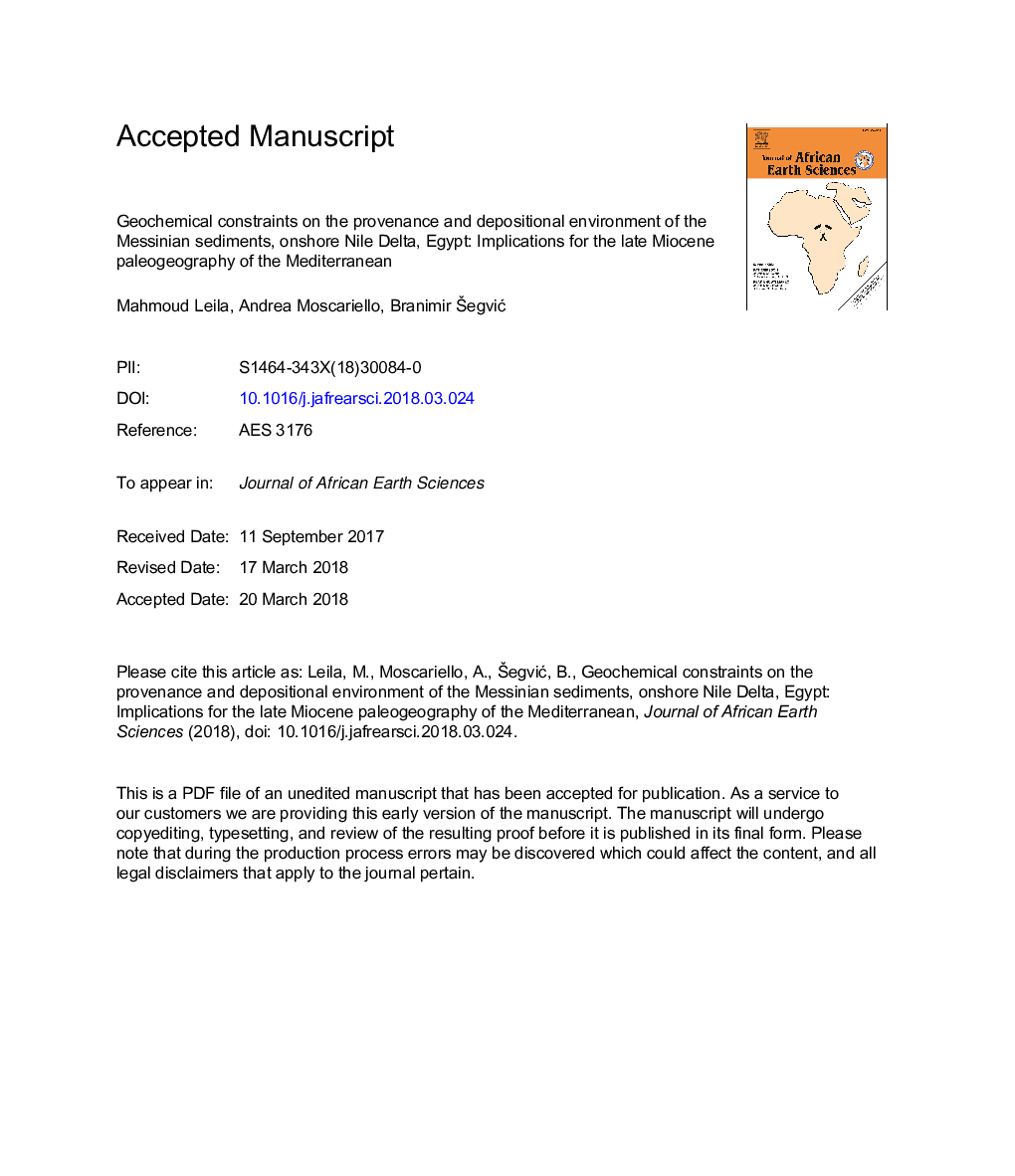| Article ID | Journal | Published Year | Pages | File Type |
|---|---|---|---|---|
| 8913471 | Journal of African Earth Sciences | 2018 | 74 Pages |
Abstract
The investigated Messinian sedimentary facies have similar passive margin geotectonic setting and their source rocks were originated in a continental collision tectonic setting that lasted from Late Cretaceous to Oligo-Miocene time. This is confirmed by the Nb/Ta, Zr/Sm ratios coupled with the pronounced Nb, Ta, P, Ti anomalies and enrichments in Pb and U relative to primitive mantle typical of subduction zone environment. The petrographical and geochemical results suggest the MSC Abu Madi sediments to have been eroded and recycled from the older pre-MSC Qawasim sediments by gravity-flow processes and fluvial channels prior to redeposition as incised-valley-fills during the late stage of the MSC. The geochemical paleoenvironmental indicators such as C-value, Sr/Cu and Sr/Ba confirm arid-dry climatic conditions during the onset of the MSC consistent with the Mediterranean desiccation. These indicators also depict a transition from freshwater to relatively normal salinity conditions during the late stage of the MSC. Geochemical results presented in this study support the retrogradational depositional infill of the Messinian incised valleys in the Nile Delta, thus confirming an incipient rise in the Mediterranean Sea level prior to the major Zanclean flooding.
Keywords
Related Topics
Physical Sciences and Engineering
Earth and Planetary Sciences
Geology
Authors
Mahmoud Leila, Andrea Moscariello, Branimir Å egviÄ,
